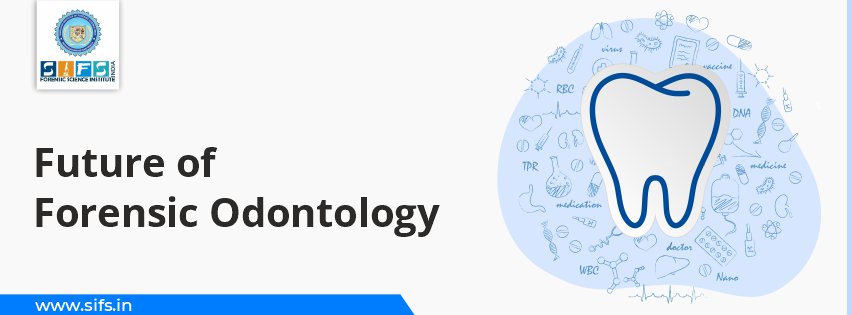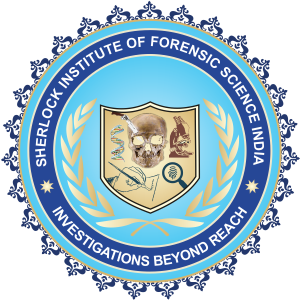- Call Us: +91 7303913002
- Email Us: education@sifs.in
Future of Forensic Odontology by Prof. Emilio Nuzzolese

BY Prof. Emilio Nuzzolese | October 27, 2025
Future of Forensic Odontology by Prof. Emilio Nuzzolese
Meet the Expert: Prof. Emilio Nuzzolese
Emilio Nuzzolese is the Founder and Past President of the Association Forensic Odontology and Human Rights (AFOHR), a Member of the Italian Academy of Legal and Forensic Dentistry, a Fellow of the American Academy of Forensic Sciences, and Chair of the Forensic Odontology Section of the Balkan Academy of Forensic Sciences.
He also serves as an Expert Witness in Court, ending a 3 year term as Honorary Juvenile Judge, and is Associate Professor and Head of the Research Laboratory of Human Identification and Forensic Odontology at the University of Turin (Italy).
“The fundamental aspects of teeth and jaws that make them valuable in the forensic analysis of human remains will never change: teeth are the most durable and resistant structures in the human body and contain unique traits and features that can help solve forensic cases and reconstruct an individual’s odontobiography.
Ongoing scientific and digital advancements will continue to evolve the field of forensic odontology and foster more evidence-based approaches to casework. Virtual autopsies — 3D imaging of human remains — and Virdentopsy are playing an increasing role in post-mortem dental data collection, analysis and teleconsultation.
Artificial intelligence is already transforming every aspect of society, and forensic odontology is no exception and is being progressively incorporated into our field, too.”

Forensic Odontology: A Bridge Between Dentistry and Law
Forensic odontology stands at the intersection of dentistry and law.
While general dentistry focuses on maintaining oral health and preventing disease, forensic odontology applies dental science to legal investigations and expert testimony involving dental evidence.
This field encompasses not only forensic dental identification, age estimation and bitemark analysis, but also dental negligence, malpractice. Forensic odontologists assist in identifying both victims and perpetrators, especially when conventional identification methods are impossible — such as in cases involving severely damaged, burnt or decomposed remains.
Training in forensic odontology includes aspects of forensic medicine, law, and research methodology, preparing professionals to examine, analyze, and present dental evidence for the justice system.
The Role of Forensic Odontology in Disaster Victim Identification
Forensic odontologists play a crucial role in disaster victim identification (DVI) — for example, following fires, earthquakes, hurricanes, air crashes, or terrorist attacks. Their expertise has been fundamental in the identification of victims of major events such as the 2004 tsunami, the September 11th attacks (2001), and various aviation disasters worldwide.
Their contribution ensures that even when DNA or fingerprints are inaccessible, dental analysis provides a resilient and reliable means of identification.

Institutions and Professional Organizations
Numerous organizations support the development of forensic odontology at both national and international levels. Most countries have at least one national forensic odontology society, though in nations like Italy and the USA, several associations coexist: Italy: OL-F, SIOF, PROOF; USA: ASFO, ABFO.
At the global level, the International Organization for Forensic Odonto-Stomatology (IOFOS), founded in 1973, brings together national societies under one umbrella.
The Association Forensic Odontology and Human Rights (AFOHR) — initially established as a group of experts in 2015 and formalized as an association in 2019 — is today the largest volunteer organization representing forensic odontology worldwide and promoting humanitarian forensic odontology. AFOHR promotes best practices in human identification and age estimation, particularly in contexts involving human rights violations.
It also organizes a triennial symposium and maintains a professional directory representing over 30 countries around the globe.
Advice for Aspiring Forensic Odontologists
Forensic odontology is both fascinating and demanding, requiring years of study and dedication. Most forensic odontologists are practicing dentists who contribute to forensic investigations on a part-time or consultative basis. Full-time positions are rare and usually found within universities or international organizations, such as the International Committee of the Red Cross (ICRC).
To become a forensic odontologist, one must first earn a degree in dentistry, then pursue specialized education in Forensic Odontology and possibly in Law. Dental hygienists and assistants can play valuable roles in supporting forensic investigations but cannot practice autonomously or provide expert opinions.
“A well rounded forensic odontologist should also have training in law and mediation, as forensic work often takes place within complex legal and ethical contexts of the judicial system.”
Formal and comprehensive university programs are limited, but there are many short courses, workshops, and international conferences that offer both knowledge and networking opportunities. Currently, English-language programs in forensic odontology are offered at:
- University of Dundee (UK)
- University of Lisbon (Portugal)
- University of Turin (Italy)
- Sherlock Institute of Forensic Science (India) through online mode
A Lifelong Journey of Learning
Becoming a forensic odontologist is a lifelong journey fueled by passion for science, ethics, and the pursuit of justice. It is a continuous process of discovery and growth.
“I encourage all passionate colleagues to join me at international forensic meetings and congresses — such as AAFS, BAFS, IFAS, IOFOS, and AFOHR — where we share knowledge, build connections, and strengthen the field of forensic odontology together.”

